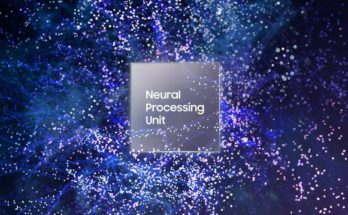The energy market has accepted more and more renewable portion today as a results of energy crisis and awareness of environment preservation. The importance of renewable energy has driven more investment and innovation. Therefore, we believe in near future, renewable energy will eventually take the major role in the world’s energy market. In short term, there are many notable trends in the energy industry, such as decarbonization, Biomass, hydrogen energy, electrification, AI and big data, storage, etc. Here, we are focused on two important ones, AI and storage that are gaining the biggest momentum to push the shifting from traditional energy to renewable energy sources.
Broader use of artificial intelligence (AI)
Artificial intelligence (AI) is gaining more and more hype from all over the world cross almost all sectors. Despite of the red-hot hype on AI, the renewable energy sector actually underused the latest technology of AI for most of the potential areas of renewable energy development. With the success observed in other fields, such as manufacturing, education, design, weather forecasting, etc., we believe AI can be also successful in renewable energy area. Once AI gains the momentum in renewable energy development, it will ultimately help us speed up energy source transition from traditional to renewable ones. Also, more involvement of AI in renewable energy production and management, the easier for us to integrate multiple renewable energy sources with the running power grid. The application picture of big data and AI is becoming clearer and clearer when these newest technologies begin to revolutionize the way of energy production, distribution, and management. Use of AI algorithms can create an intelligent coordination layer that connects the decentralized and localized energy production with the broad consumer base with accurate anticipation of energy demand at when and from where. There are already emerging renewable power generation companies which take advantage of cloud-based AI (artificial intelligence) to link multiple plants located in different areas to optimize power generation and share of the storage. AI can also play an important role in planning renewable energy sources for producing energy with less resource. It’s also proved advantageous by using AI for precise prediction in consumer demand and power distribution management for better return of capital investment and cost saving for long term operation of the renewable energy facilities. To avoid the fluctuation of power supply from solar and wind sources due to weather changes, AI can be used as a very reliable and capable tool for weather forecasting. The capability of AI in handling big data can be beneficial in collecting and rapid processing huge volume of data for renewable energy generation, such as weather changes, consumer demand pattern, and storage use, etc. As more and more renewable energy sources are put in the systems, the complexity of the management, maintenance, and routine operation will become overwhelming for traditional methods, and AI will be resorted for these challenging tasks.


Energy storage to take center stage
As more and more renewable energy sources are put in power generation, the surplus of the production after meeting the local demand and that fed into the grid have been growing fast and must be stored. The renewable energy production has become more decentralized due to the much-reduced cost of installation, remote distribution of the sources, and more flexible consumer demand. Also, due to the nature of many renewable energy sources being inconstant, energy storage has become indispensable part of the renewable energy systems. The energy storage use can keep the balance between the energy generation and demand to achieve the highest possible efficiency of the system. There are many kinds of energy storage have been developed. Batteries have been the most used technology as energy storage. Battery storage is extremely beneficial to solar and wind sources because both sources are very intermittent year round. By October 2022, there is a total of 7.8 GW (gigawatts) of utility-scale battery storage was in use in the U.S. while it’s been planned to add another 20.8 GW of battery storage in the next two years. Other technologies have also been used, such as thermal (PCM, Phase Change Material), flywheels, pumped hydro power, and compressed air, etc. There are also emerging technologies are gaining attention, such as superconducting magnet, underground pumped storage, hydrogen storage, and gravity batteries using abandoned mines.



Reference
Tanveer Ahmad, Dongdong Zhang, Chao Huang, Hongcai Zhang, Ningyi Dai, Yonghua Song, Huanxin Chen, Artificial intelligence in sustainable energy industry: Status Quo, challenges and opportunities, Journal of Cleaner Production, Volume 289, 2021, 125834, ISSN 0959-6526, https://doi.org/10.1016/j.jclepro.2021.125834.
Sunil Kr. Jha, Jasmin Bilalovic, Anju Jha, Nilesh Patel, Han Zhang, Renewable energy: Present research and future scope of Artificial Intelligence, Renewable and Sustainable Energy Reviews, Volume 77, 2017, Pages 297-317, ISSN 1364-0321, https://doi.org/10.1016/j.rser.2017.04.018.
Fu, X., Wu, X., Liu, N., Statistical machine learning model for capacitor planning considering uncertainties in photovoltaic power. Prot Control Mod Power Syst 7, 5 (2022). https://doi.org/10.1186/s41601-022-00228-z
https://www.eia.gov/todayinenergy/detail.php?id=54939
https://www.epa.gov/energy/electricity-storage
https://www.weforum.org/agenda/2021/04/renewable-energy-storage-pumped-batteries-thermal-mechanical/


